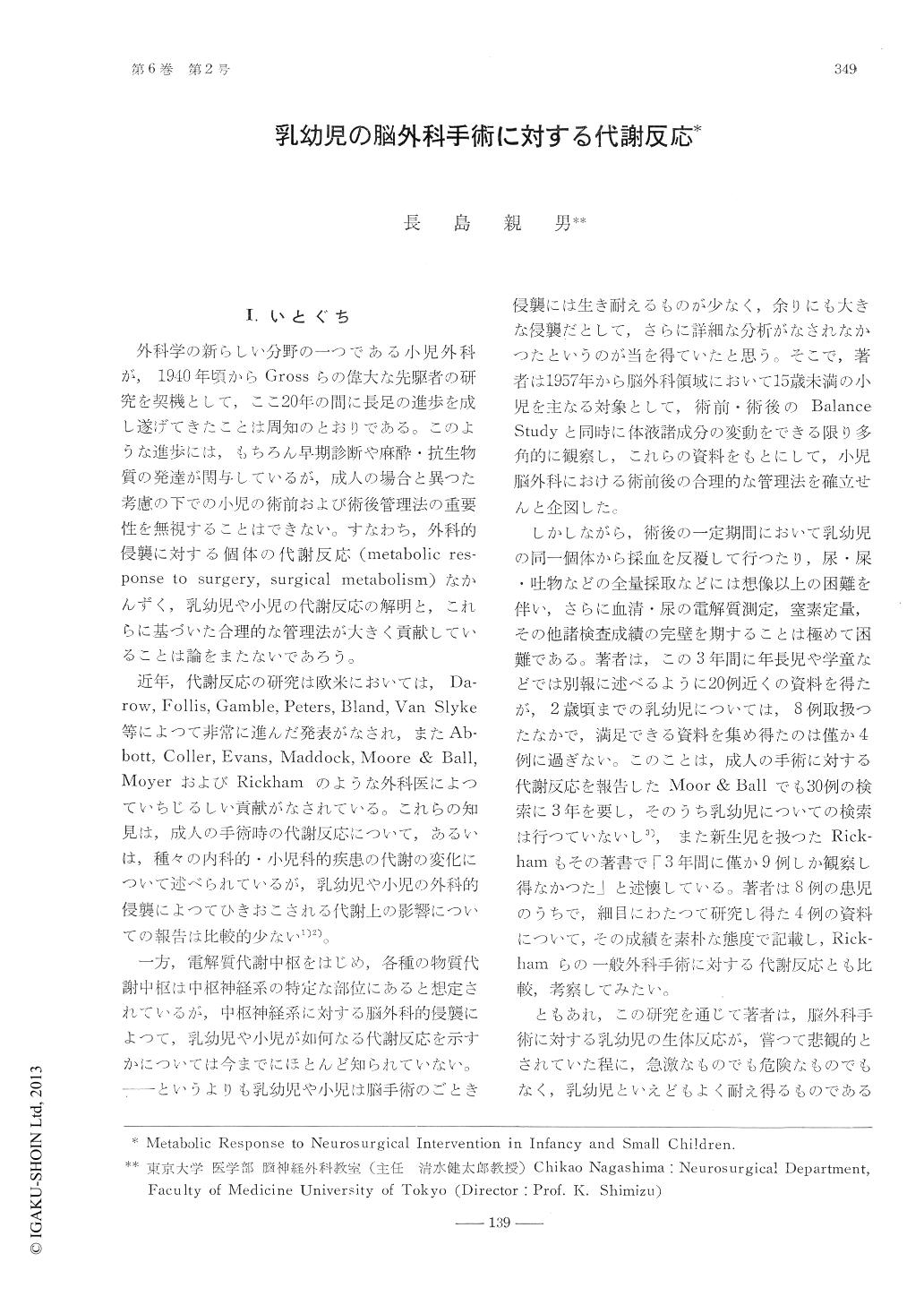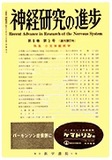Japanese
English
- 有料閲覧
- Abstract 文献概要
- 1ページ目 Look Inside
I.いとぐち
外科学の新らしい分野の一つである小児外科が,1940年頃からGrossらの偉大な先駆者の研究を契機として,ここ20年の間に長足の進歩を成し遂げてきたことは周知のとおりである。このような進歩には,もちろん早期診断や麻酔・抗生物質の発達が関与しているが,成人の場合と異つた考慮の下での小児の術前および術後管理法の重要性を無視することはできない。すなわち,外科的侵襲に対する個体の代謝反応(metabolic response to surgery,surgical metabolism)なかんずく,乳幼児や小児の代謝反応の解明と,これらに基づいた合理的な管理法が大きく貢献していることは論をまたないであろう。
近年,代謝反応の研究は欧米においては,Darow,Follis,Gamble,Peters,Bland,Van Slyke等によつて非常に進んだ発表がなされ,またAbbott,Coller,Evans,Maddock,Moore & Ball,MoyerおよびRickhamのような外科医によつていちじるしい貢献がなされている。これらの知見は,成人の手術時の代謝反応について,あるいは,種々の内科的・小児科的疾患の代謝の変化について述べられているが,乳幼児や小児の外科的侵襲によつてひきおこされる代謝上の影響についての報告は比較的少ない1)2)。
The studies on metabolic balance were performed in infancy and small children who were operated on the cerebellar tumor, craniostenosis, Crowson's disease and hydrocephalus, aged from 2 months to 2 years 4 months.
The following results were obtained.
1) The metabolic responses to neurosurgical interventions in infancy and childhood are similar to those noted after other surgical operation and it is regarded as the metabolic response to trauma which is established biologically. In some cases, however, the response differes from the ordinary biological pattern, probably due to intracranial pathological processes.
2) In the first phase of metabolic response (socalled "adrenergic corticoid phase" of Moor), some cases revealed "sodium paradox" and "operative day loss of potassium" but the other did not. But, water, sodium and chloride retention, potassium and nitrogen loss were found in almost all cases. A case of an infant in whom hypernatremia developed following the removal of cerebellar astrocyto mais described.
3) In the second phase (socalled "corticoid withdrowal phase" of Moor), the change from the first to second phase was observed from the 2nd to the 6th postoperative day, which varied considerably in individual cases. However, the patient who took orally high protein and high calory diet appeared to pass on the second stage earlier.
4) The metabolic balance in the fairly advanced stage of a brain tumor infant (case 1)revealed nitrogen loss, potassium loss, water natrium and chloride retention. (Fig.4)
These trends were never improved by ventricular drainage, but the reverse effects were followed by extirpation of the tumor.
5) In the balance study performed after ventricular drainage in hydrocephalus, the data illustrated the development of severe water, natrium and chloride depletion, hyponatremia (119mEq/1), and finally circulatory collapse. From the above mentioned results, preoperative ventricular drainage should discontinue as early as possible, and radical surgical procedure must be undertaken without delay.
6) A case of surgical removal of a cerebellar astrocytoma in a 10 month old infant who recovered satisfactorily is reported.
7) A discussion of pre-and post-operative management in neurosurgery in infancy and childhood has been carried out, using the above material.

Copyright © 1962, Igaku-Shoin Ltd. All rights reserved.


